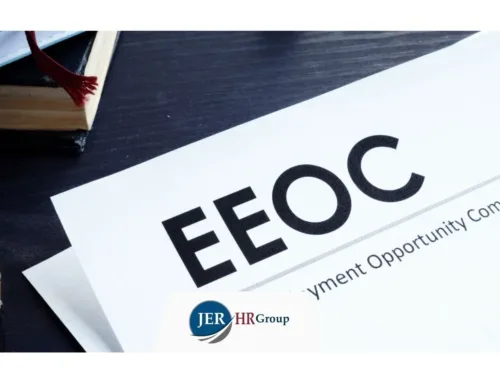Nonprofit CEO Compensation: Everything You Need to Know
Nonprofit organizations have a unique mission to serve the public good and fulfill their charitable purpose. However, many nonprofits struggle to attract and retain top executive talent due to concerns about nonprofit CEO compensation.
Some nonprofits may feel reluctant to pay their officers, while others may be having difficulty offering a competitive compensation package that can attract qualified candidates. In this blog, we will discuss the importance of offering a competitive compensation package for nonprofit CEOs and how you can determine what to offer in your CEO compensation package.
The Duties of a Nonprofit CEO
The role of a nonprofit CEO is to provide leadership and direction to the organization while ensuring that it operates effectively and efficiently. The CEO is responsible for strategic planning, fundraising, program development, financial management, and board relations. Unlike for-profit companies, nonprofit CEOs have a responsibility to ensure that their organization operates in compliance with tax-exempt status and is accountable to the public.
In some organizations, the CEO may also hold the title of executive director or president. However, the duties and responsibilities of these positions may vary depending on the organization’s size, structure, and industry.
In general, the CEO sits between the executive director and the president, in the rare instance that all three should exist in one nonprofit. The CEO is typically senior to an executive director and answers to a president. A CEO’s compensation will typically be larger than the nonprofit’s executive director compensation package but smaller than a president’s.
|
Read more about HR services for nonprofits on our blog: |
Most nonprofits will not have all three, but will either put all executive responsibilities in one role (whether executive director, CEO, or president) or split between a senior officer responsible for long term projects such as investor relations and strategic planning and a less senior executive responsible for day to day operations and personnel management.
The Importance of Offering a Competitive Compensation Package
A nonprofit organization’s CEO compensation package should be competitive with other organizations in the same industry and market. Offering a competitive package is essential to attract and retain quality talent.
Nonprofits should strive to offer a compensation package that includes salary, benefits, and retirement plans. Failure to offer a competitive package may lead to difficulty in attracting top talent, which can ultimately hinder the organization’s ability to fulfill its mission.
A typical nonprofit CEO compensation package includes the following elements:
Base Salary
The base salary of a nonprofit CEO refers to the fixed amount of compensation paid for their services. Base salaries may be expressed as an annual or hourly rate, and some organizations may use a range of salaries based on experience or tenure.
The typical base salary range for a nonprofit CEO can vary widely depending on the size and industry of the organization. According to a study conducted by GuideStar, the median salary for a nonprofit CEO in the United States was $132,739 in 2020. However, this figure can range from under $50,000 for small organizations to over $500,000 for large organizations.

Factors such as location, organizational complexity, and competition for talent can also impact the base salary range. Nonprofits should conduct research and benchmarking to determine an appropriate base salary range for their CEO that is competitive and aligns with their mission and financial resources.
Performance Incentives
Performance incentives are an additional form of compensation that nonprofits may offer their CEO to motivate and reward high performance. The general idea behind performance incentives is to tie a portion of the CEO’s compensation to the achievement of specific goals or outcomes, such as meeting fundraising targets, increasing program effectiveness, or expanding the organization’s reach.
By doing so, nonprofits can align the CEO’s interests with the organization’s mission and goals, while providing an additional incentive for high performance.
Common performance incentives that nonprofits offer their CEO include bonuses, deferred compensation, and equity-based compensation. Bonuses may be tied to achieving specific performance metrics, such as reaching fundraising targets, increasing program efficiency, or expanding the organization’s reach.
Deferred compensation programs may offer a portion of the CEO’s salary to be paid out at a future date, such as retirement, if certain performance goals are met. Equity-based compensation, such as stock options or restricted stock, may be offered to CEOs in larger nonprofits or those undergoing significant growth, as a way to align the CEO’s interests with the long-term success of the organization.
Having Trouble Attracting Qualified CEOs for Your Nonprofit? Maybe It’s Your Offer
Our staff of seasoned HR professionals can help you determine a CEO compensation package that competes with your industry and stays within your budget
Find Out More
The typical cost of a performance incentive program for a nonprofit CEO can vary widely depending on the size and industry of the organization, as well as the specific incentive program offered. A bonus program may cost several thousand dollars per year, while deferred compensation programs or equity-based compensation can cost significantly more.
Benefits
Benefits packages are an important component of the overall compensation package for nonprofit CEOs. These packages offer advantages to CEOs beyond an equivalent amount of compensation by providing access to valuable benefits that can improve their quality of life, such as healthcare, retirement plans, and other perks.
Benefits packages also offer a way for nonprofits to differentiate themselves in a competitive talent market and attract top-quality candidates who are looking for comprehensive compensation packages.
Common benefits offered by nonprofits to their CEOs include healthcare plans, retirement plans, life and disability insurance, flexible spending accounts, paid time off, and other perks such as a company car or expense account. Nonprofits may also offer unique benefits that align with their mission, such as professional development opportunities, sabbaticals, or volunteer time off.
These benefits can help to attract and retain top-quality talent, while also providing a valuable form of compensation that supports the overall well-being of the CEO.
The typical cost of benefits packages for nonprofit CEOs can vary depending on the size and industry of the organization, as well as the specific benefits offered. Healthcare plans and retirement plans are typically the most expensive components of a benefits package, followed by life and disability insurance. Other perks such as flexible spending accounts or paid time off may have a lower cost but still offer significant value to the CEO.
Severance Package
A severance package is an agreement between a nonprofit organization and its CEO that provides compensation and benefits to the CEO in the event that their employment is terminated, often due to circumstances outside of their control, such as restructuring, budget cuts, or a change in leadership.
A severance package serves as a form of protection for the CEO, ensuring that they have a financial cushion and support as they transition to a new role or seek new opportunities. It can also be viewed as a way for the nonprofit to protect its reputation and relationships, by offering a fair and reasonable package to departing CEOs.
The cost of a severance package for a nonprofit can vary depending on the terms of the agreement and the CEO’s salary and tenure with the organization. Typically, severance packages for nonprofit CEOs range from several weeks’ to several months’ worth of salary and benefits.
Severance packages may also include other benefits such as extended healthcare coverage, outplacement services, or accelerated vesting of retirement benefits.
Determining What to Offer in a CEO Compensation Package
Determining what a nonprofit should offer in a compensation package for its CEO requires a thoughtful and strategic approach that takes into account a variety of factors. To begin, the nonprofit should conduct research on the current market rates for CEO compensation in their industry and geographic region. This can be done through online research, professional associations, and benchmarking surveys.
For example, a hospital CEO’s salary will likely be greater than that of a grassroots nonprofit. Similarly, a nonprofit hospital’s CEO compensation might not be the same as a for-profit hospital.
In addition to market rates, the nonprofit should consider the specific qualifications, experience, and performance of potential candidates for the CEO role. The nonprofit may also want to consider the organization’s budget, financial goals, and long-term strategy when determining the appropriate compensation package for its CEO.
Finally, the CEO’s compensation should be in line with the rest of the nonprofit’s executive compensation packages (e.g. a nonprofit director’s salary should be less than a CEO, etc.).
Another important consideration is the mix of salary, performance incentives, benefits, and other perks that will make up the overall compensation package. Nonprofits should weigh the costs and benefits of each element and consider what will best align with their organizational culture and values.
Having Difficulty Fitting a Full Team into Your Budget? Get a New Perspective
Our compensation planning services help you build a comprehensive salary and benefits structure to ensure you attract top talent while staying within your budget
Find Out More
Finally, nonprofits may want to consult with compensation experts or HR consultants who can provide additional insight and guidance on CEO compensation trends and best practices.
Overall, determining what a nonprofit should offer in a compensation package for its CEO requires a comprehensive approach that considers market rates, the organization’s budget and goals, the qualifications of potential candidates, and the overall mix of salary, performance incentives, benefits, and other perks.
By carefully evaluating these factors and seeking outside expertise when needed, nonprofits can ensure they are offering a competitive and fair compensation package that supports their mission and attracts top-quality talent.
Nonprofit CEO Compensation Planning Services
JER HR Group specializes in providing HR services to nonprofit and public sector organizations. Our compensation planning services can help nonprofits determine appropriate compensation packages for their CEO and other top executives.
We work with organizations to conduct research, analyze data, and develop compensation packages that are competitive, equitable, and align with the organization’s strategic objectives.
Nonprofit organizations have a responsibility to serve the public good, and their success depends on having strong leadership. Offering a competitive compensation package for the CEO is essential to attract and retain top talent.
JER HR Group can help nonprofits develop compensation packages that are competitive and align with their strategic objectives. Contact us today to learn more about our compensation planning services.
Nonprofit CEO Compensation: Everything You Need to Know
Nonprofit organizations have a unique mission to serve the public good and fulfill their charitable purpose. However, many nonprofits struggle to attract and retain top executive talent due to concerns about nonprofit CEO compensation.
Some nonprofits may feel reluctant to pay their officers, while others may be having difficulty offering a competitive compensation package that can attract qualified candidates. In this blog, we will discuss the importance of offering a competitive compensation package for nonprofit CEOs and how you can determine what to offer in your CEO compensation package.
The Duties of a Nonprofit CEO
The role of a nonprofit CEO is to provide leadership and direction to the organization while ensuring that it operates effectively and efficiently. The CEO is responsible for strategic planning, fundraising, program development, financial management, and board relations. Unlike for-profit companies, nonprofit CEOs have a responsibility to ensure that their organization operates in compliance with tax-exempt status and is accountable to the public.
In some organizations, the CEO may also hold the title of executive director or president. However, the duties and responsibilities of these positions may vary depending on the organization’s size, structure, and industry.
In general, the CEO sits between the executive director and the president, in the rare instance that all three should exist in one nonprofit. The CEO is typically senior to an executive director and answers to a president. A CEO’s compensation will typically be larger than the nonprofit’s executive director compensation package but smaller than a president’s.
|
Read more about HR services for nonprofits on our blog: |
Most nonprofits will not have all three, but will either put all executive responsibilities in one role (whether executive director, CEO, or president) or split between a senior officer responsible for long term projects such as investor relations and strategic planning and a less senior executive responsible for day to day operations and personnel management.
The Importance of Offering a Competitive Compensation Package
A nonprofit organization’s CEO compensation package should be competitive with other organizations in the same industry and market. Offering a competitive package is essential to attract and retain quality talent.
Nonprofits should strive to offer a compensation package that includes salary, benefits, and retirement plans. Failure to offer a competitive package may lead to difficulty in attracting top talent, which can ultimately hinder the organization’s ability to fulfill its mission.
A typical nonprofit CEO compensation package includes the following elements:
Base Salary
The base salary of a nonprofit CEO refers to the fixed amount of compensation paid for their services. Base salaries may be expressed as an annual or hourly rate, and some organizations may use a range of salaries based on experience or tenure.
The typical base salary range for a nonprofit CEO can vary widely depending on the size and industry of the organization. According to a study conducted by GuideStar, the median salary for a nonprofit CEO in the United States was $132,739 in 2020. However, this figure can range from under $50,000 for small organizations to over $500,000 for large organizations.

Factors such as location, organizational complexity, and competition for talent can also impact the base salary range. Nonprofits should conduct research and benchmarking to determine an appropriate base salary range for their CEO that is competitive and aligns with their mission and financial resources.
Performance Incentives
Performance incentives are an additional form of compensation that nonprofits may offer their CEO to motivate and reward high performance. The general idea behind performance incentives is to tie a portion of the CEO’s compensation to the achievement of specific goals or outcomes, such as meeting fundraising targets, increasing program effectiveness, or expanding the organization’s reach.
By doing so, nonprofits can align the CEO’s interests with the organization’s mission and goals, while providing an additional incentive for high performance.
Common performance incentives that nonprofits offer their CEO include bonuses, deferred compensation, and equity-based compensation. Bonuses may be tied to achieving specific performance metrics, such as reaching fundraising targets, increasing program efficiency, or expanding the organization’s reach.
Deferred compensation programs may offer a portion of the CEO’s salary to be paid out at a future date, such as retirement, if certain performance goals are met. Equity-based compensation, such as stock options or restricted stock, may be offered to CEOs in larger nonprofits or those undergoing significant growth, as a way to align the CEO’s interests with the long-term success of the organization.
Having Trouble Attracting Qualified CEOs for Your Nonprofit? Maybe It’s Your Offer
Our staff of seasoned HR professionals can help you determine a CEO compensation package that competes with your industry and stays within your budget
Find Out More
The typical cost of a performance incentive program for a nonprofit CEO can vary widely depending on the size and industry of the organization, as well as the specific incentive program offered. A bonus program may cost several thousand dollars per year, while deferred compensation programs or equity-based compensation can cost significantly more.
Benefits
Benefits packages are an important component of the overall compensation package for nonprofit CEOs. These packages offer advantages to CEOs beyond an equivalent amount of compensation by providing access to valuable benefits that can improve their quality of life, such as healthcare, retirement plans, and other perks.
Benefits packages also offer a way for nonprofits to differentiate themselves in a competitive talent market and attract top-quality candidates who are looking for comprehensive compensation packages.
Common benefits offered by nonprofits to their CEOs include healthcare plans, retirement plans, life and disability insurance, flexible spending accounts, paid time off, and other perks such as a company car or expense account. Nonprofits may also offer unique benefits that align with their mission, such as professional development opportunities, sabbaticals, or volunteer time off.
These benefits can help to attract and retain top-quality talent, while also providing a valuable form of compensation that supports the overall well-being of the CEO.
The typical cost of benefits packages for nonprofit CEOs can vary depending on the size and industry of the organization, as well as the specific benefits offered. Healthcare plans and retirement plans are typically the most expensive components of a benefits package, followed by life and disability insurance. Other perks such as flexible spending accounts or paid time off may have a lower cost but still offer significant value to the CEO.
Severance Package
A severance package is an agreement between a nonprofit organization and its CEO that provides compensation and benefits to the CEO in the event that their employment is terminated, often due to circumstances outside of their control, such as restructuring, budget cuts, or a change in leadership.
A severance package serves as a form of protection for the CEO, ensuring that they have a financial cushion and support as they transition to a new role or seek new opportunities. It can also be viewed as a way for the nonprofit to protect its reputation and relationships, by offering a fair and reasonable package to departing CEOs.
The cost of a severance package for a nonprofit can vary depending on the terms of the agreement and the CEO’s salary and tenure with the organization. Typically, severance packages for nonprofit CEOs range from several weeks’ to several months’ worth of salary and benefits.
Severance packages may also include other benefits such as extended healthcare coverage, outplacement services, or accelerated vesting of retirement benefits.
Determining What to Offer in a CEO Compensation Package
Determining what a nonprofit should offer in a compensation package for its CEO requires a thoughtful and strategic approach that takes into account a variety of factors. To begin, the nonprofit should conduct research on the current market rates for CEO compensation in their industry and geographic region. This can be done through online research, professional associations, and benchmarking surveys.
For example, a hospital CEO’s salary will likely be greater than that of a grassroots nonprofit. Similarly, a nonprofit hospital’s CEO compensation might not be the same as a for-profit hospital.
In addition to market rates, the nonprofit should consider the specific qualifications, experience, and performance of potential candidates for the CEO role. The nonprofit may also want to consider the organization’s budget, financial goals, and long-term strategy when determining the appropriate compensation package for its CEO.
Finally, the CEO’s compensation should be in line with the rest of the nonprofit’s executive compensation packages (e.g. a nonprofit director’s salary should be less than a CEO, etc.).
Another important consideration is the mix of salary, performance incentives, benefits, and other perks that will make up the overall compensation package. Nonprofits should weigh the costs and benefits of each element and consider what will best align with their organizational culture and values.
Having Difficulty Fitting a Full Team into Your Budget? Get a New Perspective
Our compensation planning services help you build a comprehensive salary and benefits structure to ensure you attract top talent while staying within your budget
Find Out More
Finally, nonprofits may want to consult with compensation experts or HR consultants who can provide additional insight and guidance on CEO compensation trends and best practices.
Overall, determining what a nonprofit should offer in a compensation package for its CEO requires a comprehensive approach that considers market rates, the organization’s budget and goals, the qualifications of potential candidates, and the overall mix of salary, performance incentives, benefits, and other perks.
By carefully evaluating these factors and seeking outside expertise when needed, nonprofits can ensure they are offering a competitive and fair compensation package that supports their mission and attracts top-quality talent.
Nonprofit CEO Compensation Planning Services
JER HR Group specializes in providing HR services to nonprofit and public sector organizations. Our compensation planning services can help nonprofits determine appropriate compensation packages for their CEO and other top executives.
We work with organizations to conduct research, analyze data, and develop compensation packages that are competitive, equitable, and align with the organization’s strategic objectives.
Nonprofit organizations have a responsibility to serve the public good, and their success depends on having strong leadership. Offering a competitive compensation package for the CEO is essential to attract and retain top talent.
JER HR Group can help nonprofits develop compensation packages that are competitive and align with their strategic objectives. Contact us today to learn more about our compensation planning services.






